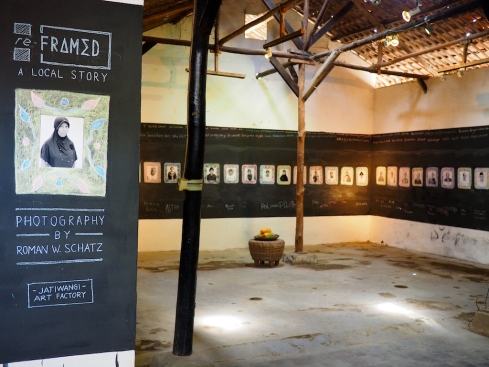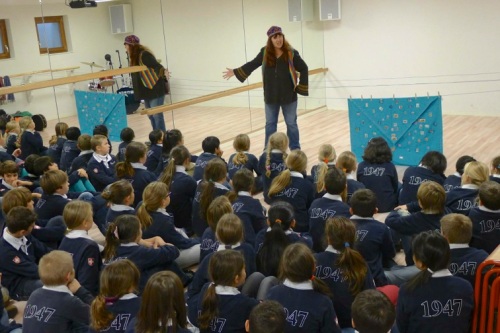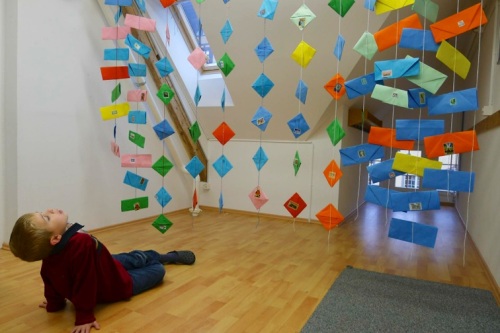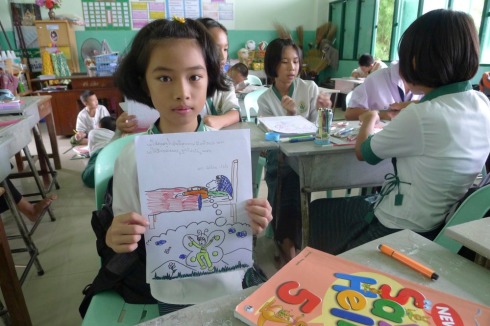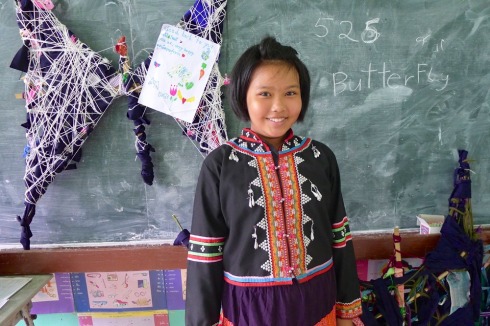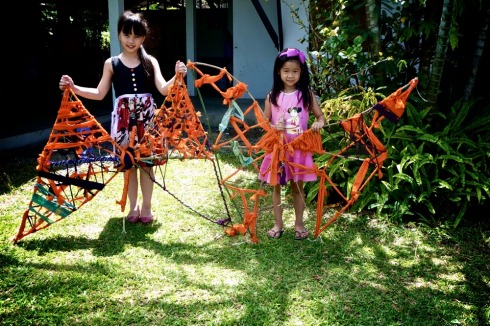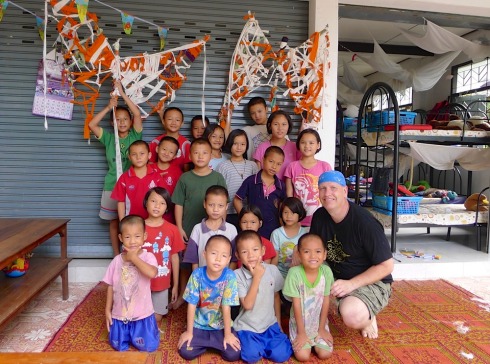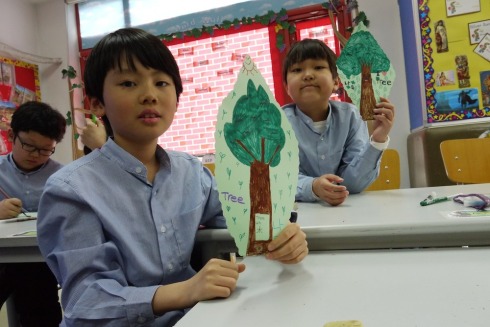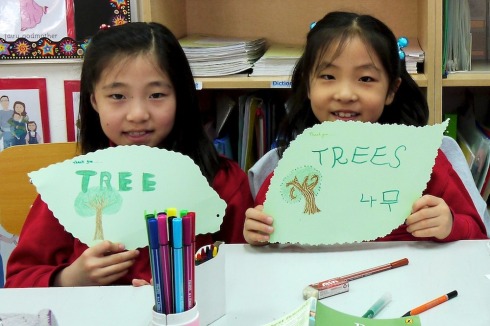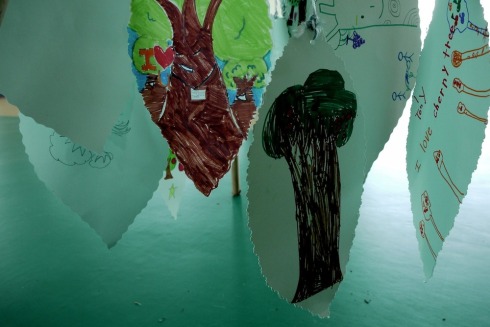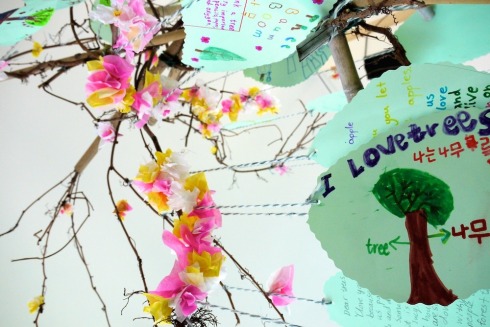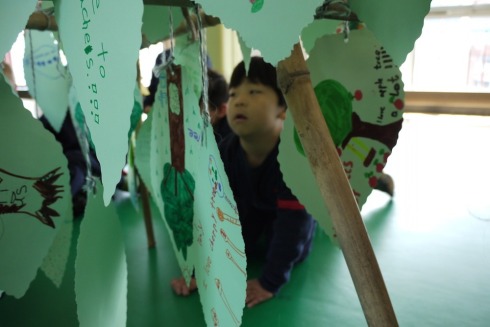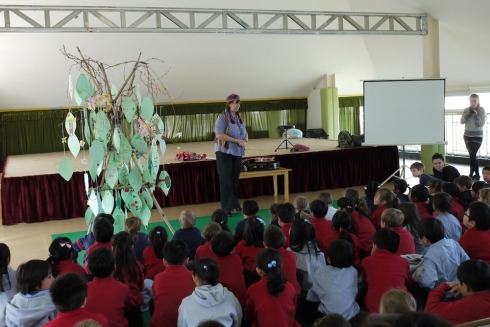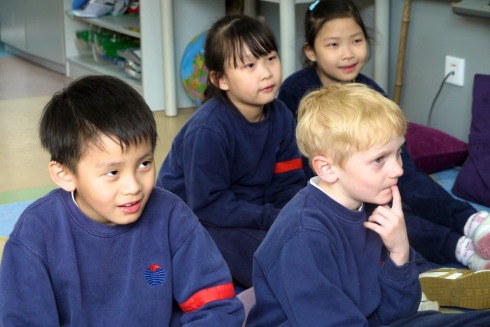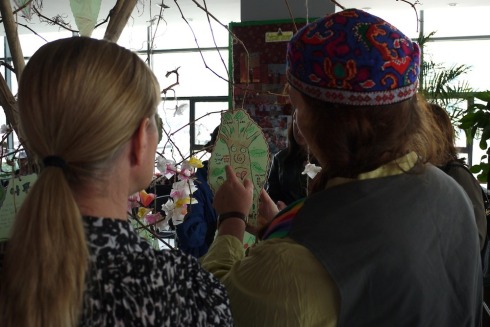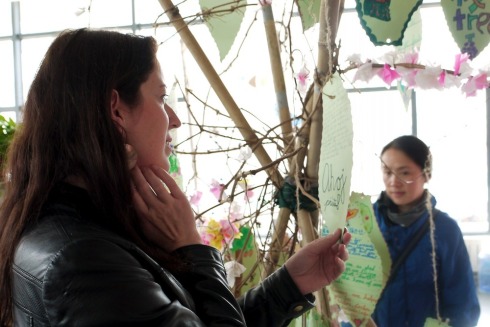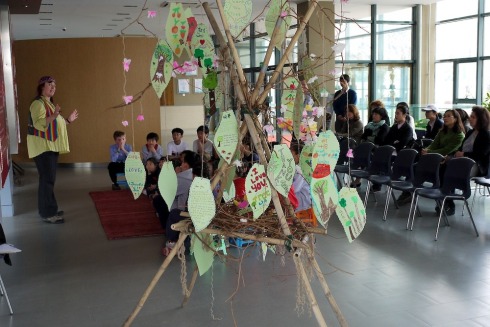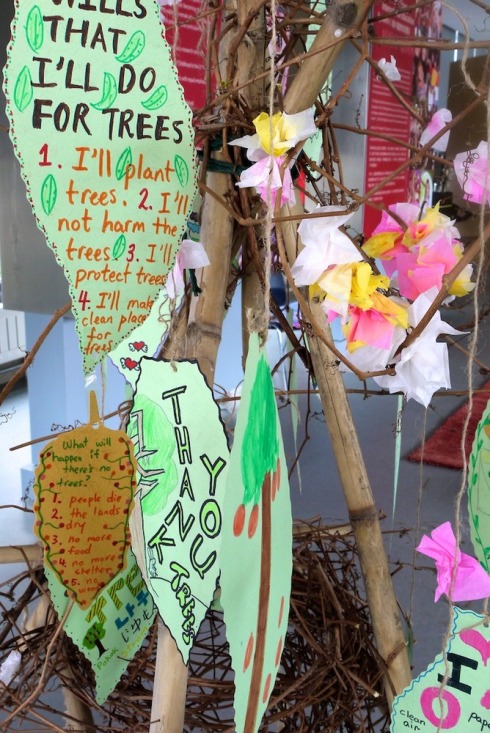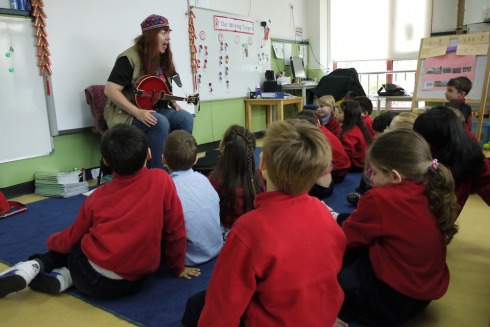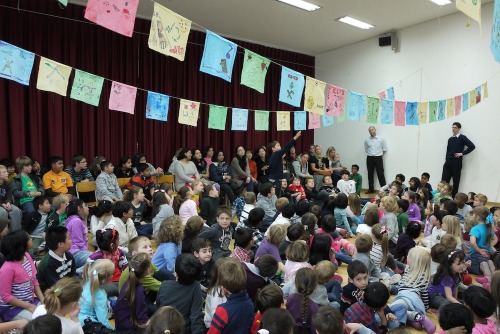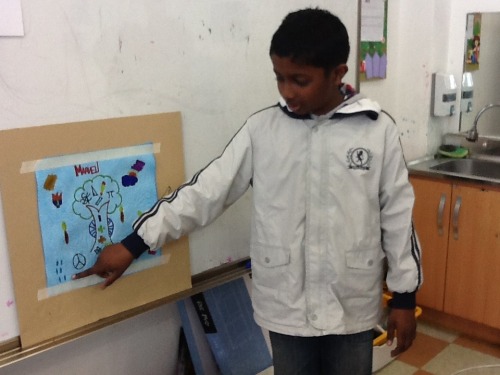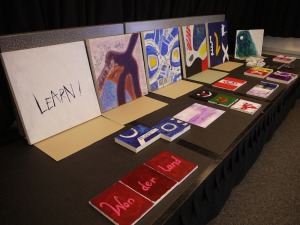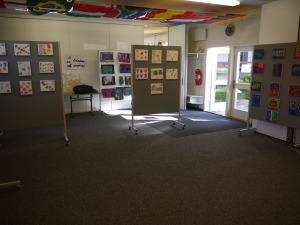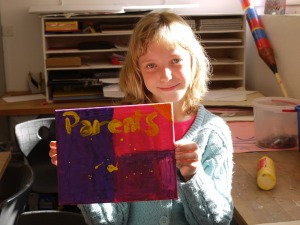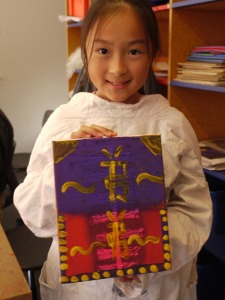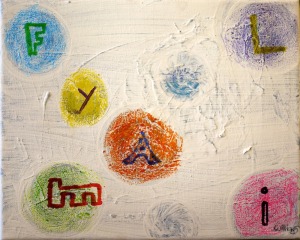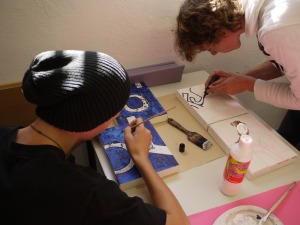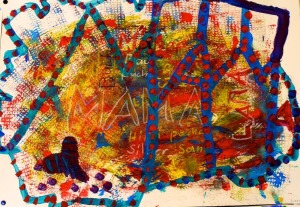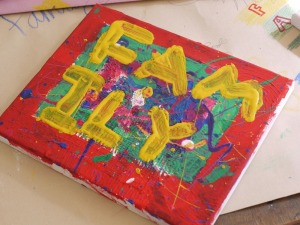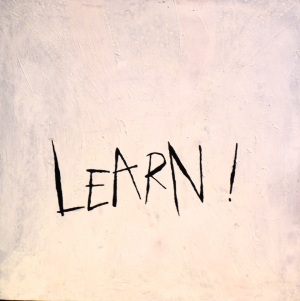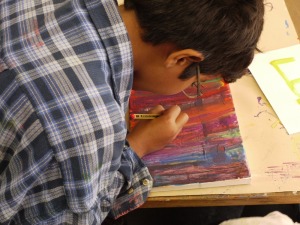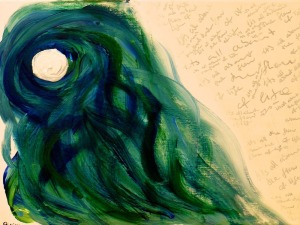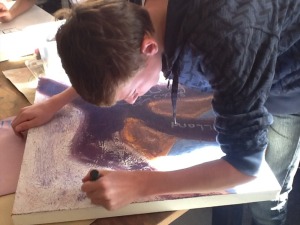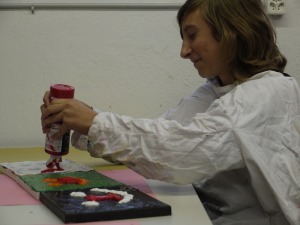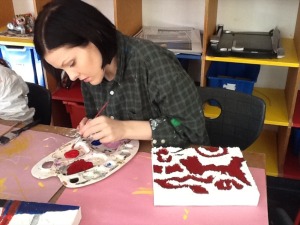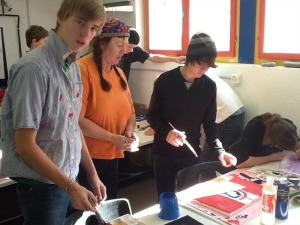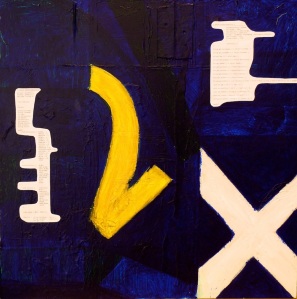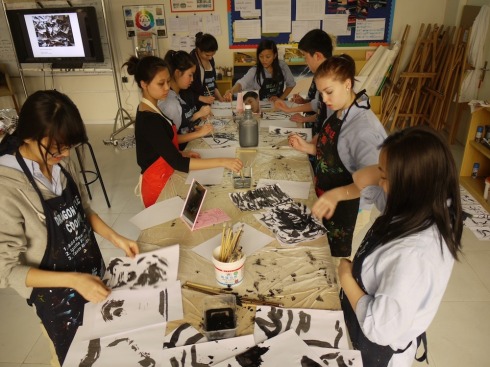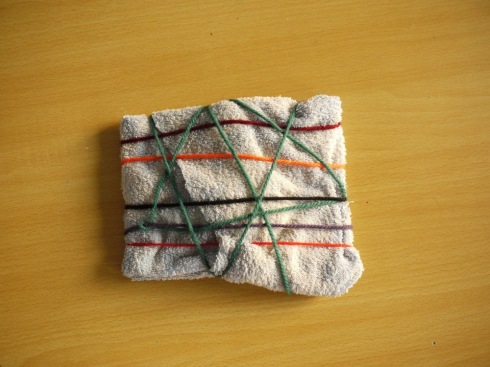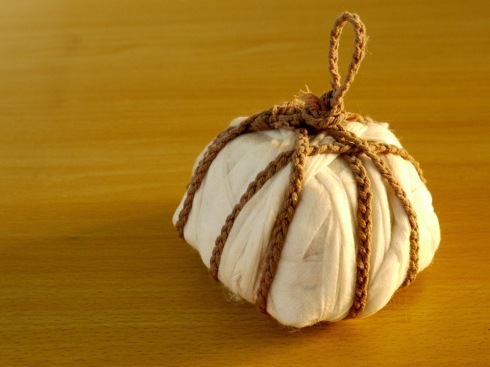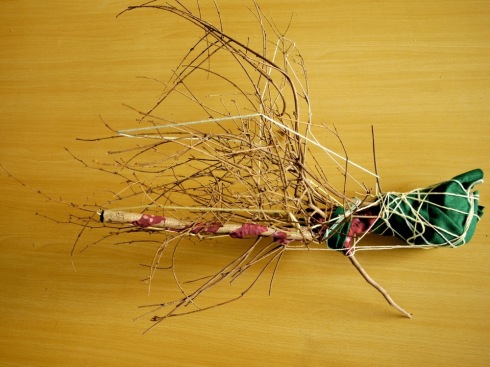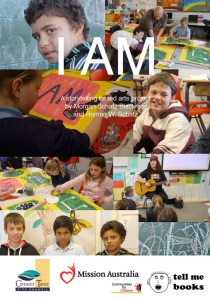I AM
A Text-based Arts Project on Identity
A three day arts residency at the International School of the Rheintal in Buchs, Switzerland in 2011.
Students from Preschool through to Year 10 attended workshops exploring and expressing their identity, culminating in the exhibition of their works.
Preschool and Kindergarten created pieces on their collective identity and older students created individual artworks.
The process included the oral presentation of different folktales exploring the concepts of perspective, choice and collaboration; a visual presentation of the genre of text-based artworks; and discussion on the creation of Conceptual Art.
Preschool and Kindergarten
The artwork is an expression of the students’ collective and individual identity.
This was achieved through the process of allowing each student to choose and create their preferred colour and shape, in the selection of shapes and colours offered.
These then formed the background for the written documentation of their feelings, observations and ideas.
The stories and rhymes presented in the workshops explored colour choices and the role of the senses in guiding preferences.
Grades 1 2 3 4
Students were told stories that explored unity, wholeness and perspectives.
Using the 5 w’s; who, what, where, when and why, a series of questions were put to them about themselves. They wrote down answers to the
questions and were then asked to select the word(s) that were most important to them. The word(s) became the focus of the artwork.
The students were asked to choose their favourite colours, combinations and style of presentation to reflect their individuality.
Years 5 6 7 8 9 10
The following equation was used to express the concept of the I AM Project.
I AM = 5w + xy + ac
An explanation of the equasion:
I = Self, A = Age, M = Message
5w = who, what where, when, why
x = number
y = years
a = aesthetic(colours, size, materials, text, concept)
c = choices
Therefore I AM = artwork = expression of identity.
Students were presented with canvases that had already been painted. They had to choose how they would use these in the creation of their own
works. The concept behind this was that each of us is born into an existing narrative, i.e. family, culture, country, body. We make choices to embrace, reject, transform and recreate our identity as we grow older. These are the aesthetic choices the students make in creating an identity – based artwork.
Tags: art, Buchs, I AM, storytelling, Switzerland, text

